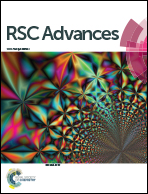Mechanochemically induced transformation of CoO(OH) into Co3O4 nanoparticles and their highly reversible Li storage characteristics†
Abstract
A simple synthetic method for the mechanochemically induced transformation of cobalt oxyhydroxides (CoO(OH)) into cobalt oxide (Co3O4) nanoparticles is developed. Using this method, extremely small and well-dispersed Co3O4 (3–5 nm) nanoparticles are synthesized and their use as a high-performance anode for Li-ion batteries is evaluated. The Co3O4 nanoparticle electrode shows excellent electrochemical performances such as a highly reversible capacity of 1023 mA h g−1 with excellent cycling behavior over 100 cycles and a superior rate capability of 760 mA h g−1 at an extremely fast current rate of 3C. This simple mechanochemically induced transformation method for extremely small and well-dispersed cobalt oxide nanoparticles is highly applicable to the preparation of other metal oxide nanoparticles for obtaining highly reversible Li storage characteristics.



 Please wait while we load your content...
Please wait while we load your content...